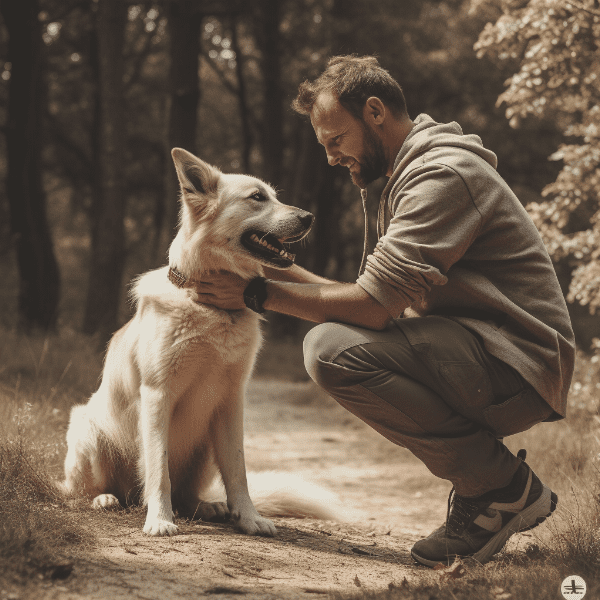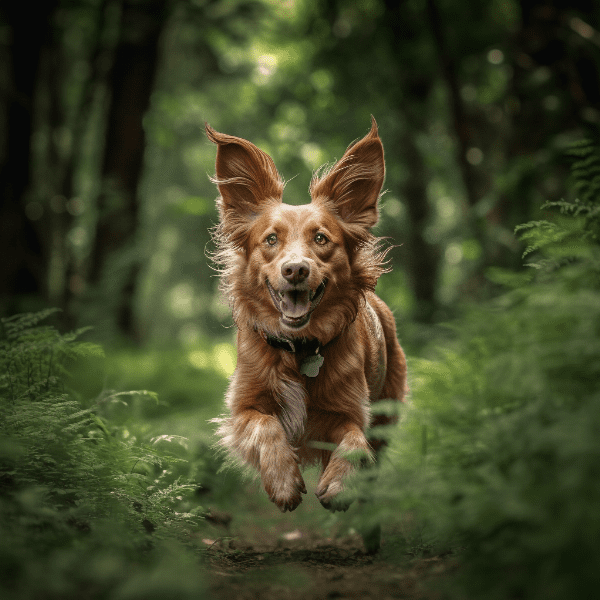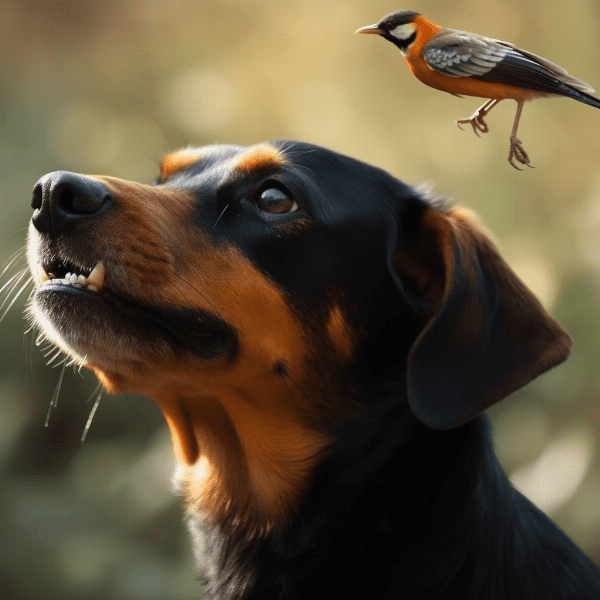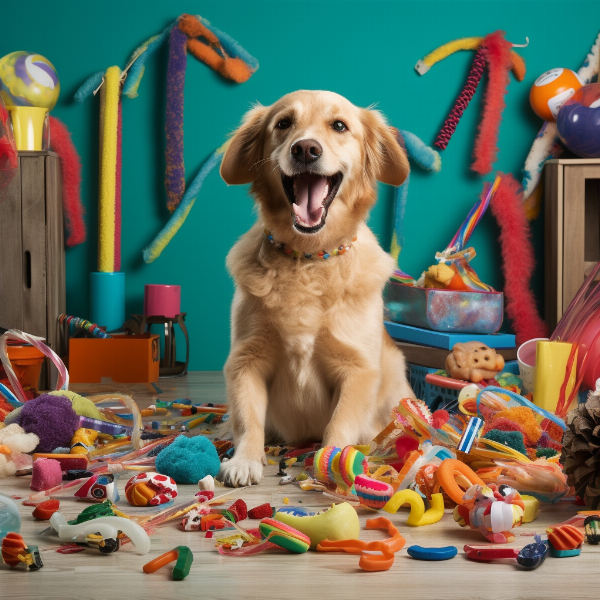Table of Contents
- The Nature of the Hunt: Understanding a Dog’s Instinct to Chase
- Breeds Prone to Chasing: Which Dogs are Most Likely to Chase Rabbits
- Managing the Chase: Tips for Preventing and Stopping Rabbit Chasing
- Training for Control: Teaching Your Dog to Resist the Urge to Chase
- Benefits and Risks: Exploring the Consequences of Rabbit Chasing for Dogs and Rabbits
- Alternative Activities: Channeling Your Dog’s Energy into Productive Play
- Understanding Your Dog: The Role of Breed, Age, and Personality in Chasing Behavior
- Hunting with Dogs: The History and Evolution of Canine Hunting Partners
- Legal Considerations: Laws and Regulations Regarding Dog Hunting and Rabbit Chasing
- Responsible Ownership: Ensuring Your Dog’s Safety and Happiness While Respecting Wildlife.
The Nature of the Hunt: Understanding a Dog’s Instinct to Chase
Dogs are natural predators with an inherent desire to chase and capture prey. This instinct is deeply ingrained in their genetic makeup, passed down from their wild ancestors who relied on hunting for survival. While domestication has changed some of their behaviors, the hunting instinct remains a prominent trait in many dog breeds.
How the Instinct Works
When a dog sees a rabbit running across a field or a squirrel darting up a tree, its hunting instinct kicks in. The dog’s body releases adrenaline, causing its heart rate to increase and its senses to sharpen. This heightened state of awareness allows the dog to focus entirely on the prey and block out distractions.
As the dog begins to chase the prey, its natural instincts take over. The dog’s predatory instincts trigger the release of dopamine, which produces a feeling of pleasure and satisfaction. This feeling reinforces the dog’s desire to chase and catch prey, creating a cycle of behavior that can be challenging to break.
The Role of Scent
Dogs have an exceptional sense of smell, which plays a critical role in their hunting instinct. When a dog smells the scent of prey, its brain releases a chemical called oxytocin. This chemical increases the dog’s excitement and motivation to chase and catch the prey.
In some cases, the dog may even ignore visual cues and rely solely on its sense of smell to track and chase prey. This is particularly true for hounds and other scent-oriented breeds that were specifically bred for hunting.
The Influence of Breed
The hunting instinct varies depending on the breed of the dog. Some breeds, such as Greyhounds and Whippets, have been specifically bred for chasing prey, and their instinct is incredibly strong. Other breeds, such as Bulldogs and Basset Hounds, have less of a hunting instinct and may be less likely to chase prey.
However, it’s important to note that even dogs with a weaker hunting instinct may still exhibit chasing behavior. Owners must be aware of their dog’s breed and potential hunting tendencies to ensure their safety and the safety of others.
Conclusion
Understanding a dog’s instinct to chase is critical for responsible dog ownership. While it’s impossible to completely eliminate a dog’s hunting instinct, owners can take steps to manage and control it. By providing adequate exercise, training, and socialization, owners can help their dogs resist the urge to chase and live harmoniously with their environment.
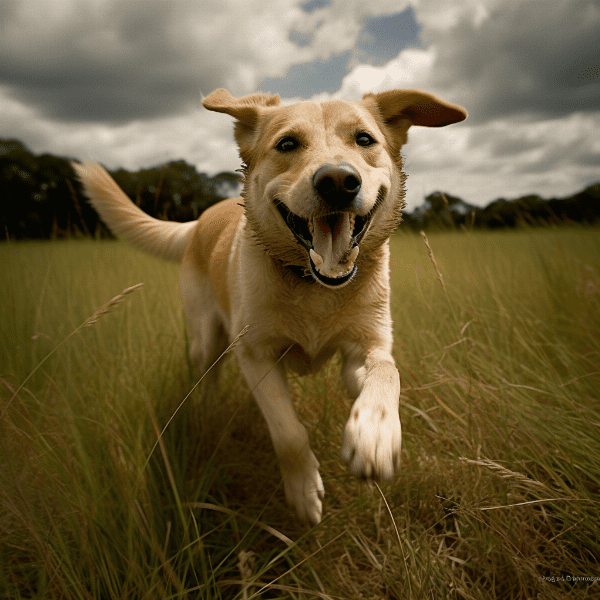
Breeds Prone to Chasing: Which Dogs are Most Likely to Chase Rabbits
While all dogs have some level of instinct to chase, certain breeds are more prone to this behavior than others. These breeds were historically used for hunting and have been selectively bred for their ability to track and capture prey. Here are some of the breeds most likely to chase rabbits and other small animals:
Sighthounds
Sighthounds, such as Greyhounds, Whippets, and Salukis, were bred for their exceptional speed and sight. They have a keen ability to spot prey from a distance and pursue it with incredible speed. Sighthounds are known for their chasing instinct and can quickly catch rabbits and other small animals.
Terriers
Terriers were originally bred to hunt small rodents and other vermin. They have a strong prey drive and will often pursue small animals with great tenacity. Some of the terrier breeds known for their chasing instinct include the Jack Russell Terrier, Rat Terrier, and Scottish Terrier.
Herding Breeds
Herding breeds, such as Border Collies, Australian Shepherds, and Corgis, were bred to help farmers manage livestock. While their primary role is not hunting, these breeds have a strong prey drive and may chase rabbits and other small animals.
Sporting Breeds
Sporting breeds, such as Labrador Retrievers, Spaniels, and Pointers, were bred for hunting birds and other game. While they are less likely to chase rabbits than some of the other breeds mentioned, their natural instinct to hunt and retrieve can still cause them to pursue small animals.
Mixed Breeds
It’s important to note that chasing behavior is not limited to purebred dogs. Mixed breed dogs can also exhibit strong hunting instincts, particularly if they have ancestry from one of the breeds mentioned above.
Conclusion
Understanding which breeds are most likely to chase rabbits can help owners take proactive measures to manage their dog’s behavior. It’s important to remember that while certain breeds may be more prone to chasing, individual dogs can vary in their behavior based on their training, socialization, and environment. By being aware of their dog’s breed and tendencies, owners can provide appropriate exercise, training, and supervision to ensure their dog’s safety and the safety of others.

Managing the Chase: Tips for Preventing and Stopping Rabbit Chasing
Preventing and stopping rabbit chasing in dogs requires a combination of management strategies, training, and environmental modifications. Here are some tips for managing the chase:
Supervision
One of the most effective ways to prevent rabbit chasing is through constant supervision. If a dog is left unsupervised in an area where rabbits are present, it’s likely that they will begin to chase. By keeping a close eye on the dog, owners can intervene before the chase begins.
Secure Fencing
If rabbits are present in the dog’s yard or nearby, it’s important to have a secure fence that the dog cannot jump or dig under. This will prevent the dog from having access to the rabbits and reduce the risk of chasing.
Distraction
Providing the dog with appropriate toys and activities can help redirect their attention away from rabbits. Interactive toys, such as puzzle toys or treat-dispensing toys, can keep the dog mentally stimulated and less likely to engage in chasing behavior.
Positive Reinforcement Training
Training can be an effective way to teach the dog to ignore rabbits and focus on their owner’s commands. Positive reinforcement training, using treats or praise to reward desired behavior, can be particularly effective in teaching the dog to resist the urge to chase.
Leash Training
Leash training can be an effective way to prevent rabbit chasing during walks. By keeping the dog on a leash and redirecting their attention away from rabbits, owners can control their behavior and prevent the chase from occurring.
Conclusion
Preventing and stopping rabbit chasing in dogs requires a combination of management strategies, training, and environmental modifications. By using these tips, owners can manage their dog’s behavior and prevent them from chasing rabbits and other small animals. It’s important to remember that chasing behavior is a natural instinct in dogs, and complete elimination of this behavior is unlikely. However, by using these strategies, owners can minimize the risk of chasing and ensure the safety of their dog and other animals.

Training for Control: Teaching Your Dog to Resist the Urge to Chase
Training is an essential component of preventing and stopping rabbit chasing in dogs. Through training, owners can teach their dogs to resist the urge to chase and focus on their commands instead. Here are some tips for training your dog to control their chasing behavior:
Start with Basic Commands
Before addressing the chasing behavior, it’s important to ensure that the dog has a solid foundation of basic commands, such as sit, stay, and come. These commands will form the basis for teaching the dog to resist the urge to chase.
Use Positive Reinforcement
Positive reinforcement is an effective way to teach dogs to control their behavior. When the dog follows commands and resists the urge to chase, reward them with treats, praise, or play. This positive reinforcement will encourage the dog to continue the desired behavior.
Practice in Controlled Environments
Start training in a controlled environment, such as a fenced yard, before moving to more challenging environments. Gradually increase the difficulty of the training by adding distractions, such as toys or food, to simulate the presence of rabbits.
Teach the “Leave It” Command
Teaching the dog to “leave it” is a crucial command for preventing chasing behavior. Start by placing a treat on the ground and telling the dog to “leave it.” When the dog ignores the treat, reward them with a treat from your hand. Gradually increase the difficulty by placing the treat closer to the dog and adding distractions.
Use Desensitization Techniques
Desensitization is the process of gradually exposing the dog to the stimulus that triggers their chasing behavior. This technique can be used to reduce the dog’s excitement and arousal levels in the presence of rabbits.
Conclusion
Training is an essential component of preventing and stopping rabbit chasing in dogs. By using positive reinforcement, practicing in controlled environments, teaching the “leave it” command, and using desensitization techniques, owners can teach their dogs to resist the urge to chase and focus on their commands instead. With patience and consistency, owners can help their dogs control their chasing behavior and live harmoniously with their environment.
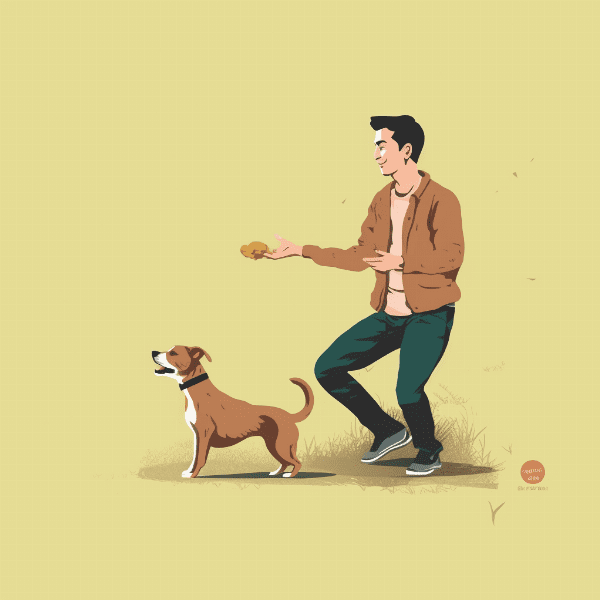
Benefits and Risks: Exploring the Consequences of Rabbit Chasing for Dogs and Rabbits
Rabbit chasing can have both benefits and risks for both dogs and rabbits. Understanding the consequences of this behavior is crucial for responsible dog ownership and conservation efforts.
Benefits for Dogs
Chasing rabbits can provide dogs with physical exercise and mental stimulation. It can also satisfy their natural instincts and provide a sense of fulfillment. However, these benefits must be balanced against the risks to both the dog and the rabbit.
Risks for Dogs
Rabbit chasing can pose several risks to dogs. Dogs can become injured while chasing rabbits, particularly if they are running through rough terrain or into traffic. They may also encounter other dangers, such as snakes or poisonous plants, while in pursuit of prey. Additionally, if dogs are not properly supervised or trained, they may become lost or injured while chasing rabbits.
Benefits for Rabbits
While it may seem counterintuitive, rabbit chasing can have some benefits for rabbits. Dogs can help to control rabbit populations, particularly in areas where overpopulation can lead to habitat destruction or disease. However, this benefit must also be balanced against the risks to both the dog and the rabbit.
Risks for Rabbits
Rabbit chasing can pose a significant risk to rabbit populations, particularly in areas where they are already threatened or endangered. If dogs are allowed to chase rabbits without any restrictions, it can lead to significant declines in rabbit populations. Additionally, rabbits can suffer from stress-related illnesses and injuries while being chased.
Conclusion
Rabbit chasing can have both benefits and risks for dogs and rabbits. While it may provide dogs with physical exercise and mental stimulation, it can also pose significant risks to their safety and the safety of rabbits. Similarly, while it may help to control rabbit populations, it can also lead to declines in rabbit populations and cause harm to individual rabbits. As responsible dog owners, it’s important to manage and control chasing behavior and prioritize the safety and well-being of both dogs and rabbits.

Alternative Activities: Channeling Your Dog’s Energy into Productive Play
While chasing rabbits may provide dogs with physical exercise and mental stimulation, it can also pose significant risks to their safety and the safety of rabbits. Alternative activities can provide dogs with the same benefits while minimizing the risks. Here are some ideas for channeling your dog’s energy into productive play:
Interactive Toys
Interactive toys, such as puzzle toys or treat-dispensing toys, can provide dogs with mental stimulation and physical exercise. These toys require the dog to solve a puzzle or manipulate an object to receive a treat or toy, providing hours of entertainment and exercise.
Fetch and Retrieval
Playing fetch and retrieval games can provide dogs with physical exercise while also satisfying their natural instincts. These games can be played in a controlled environment, such as a fenced yard, to minimize the risk of injury or accidents.
Agility Training
Agility training can provide dogs with physical exercise and mental stimulation while also building their confidence and obedience. This type of training involves navigating obstacles and completing courses, providing the dog with a fun and challenging workout.
Swimming
Swimming can provide dogs with low-impact exercise while also cooling them down on hot days. Dogs can swim in a pool, lake, or other safe bodies of water, providing them with a fun and refreshing activity.
Conclusion
While chasing rabbits may be a natural instinct for dogs, it can pose significant risks to their safety and the safety of rabbits. By channeling their energy into alternative activities, owners can provide their dogs with the same benefits while minimizing the risks. Interactive toys, fetch and retrieval games, agility training, and swimming are just a few of the many activities that can provide dogs with physical exercise and mental stimulation. By providing their dogs with appropriate activities, owners can ensure their dog’s safety and well-being while also satisfying their natural instincts.
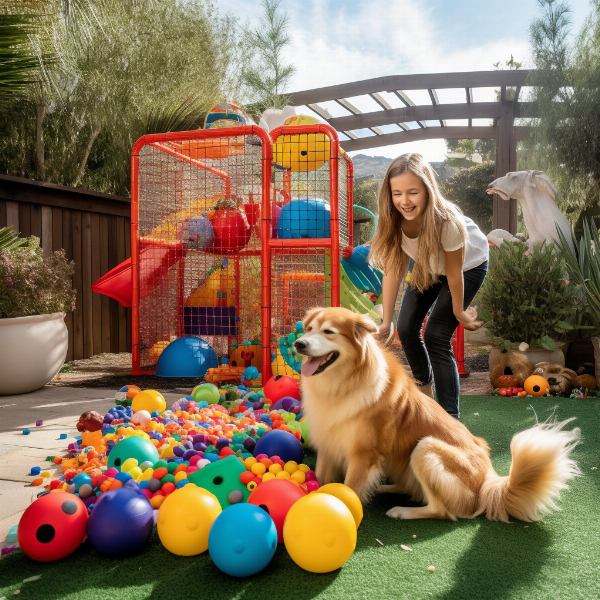
Understanding Your Dog: The Role of Breed, Age, and Personality in Chasing Behavior
Chasing behavior in dogs is influenced by a variety of factors, including breed, age, and personality. Understanding these factors can help owners manage and control their dog’s chasing behavior.
Breed
As mentioned earlier, certain breeds are more prone to chasing behavior than others. Sighthounds, terriers, and herding breeds are among the breeds most likely to chase rabbits and other small animals. However, it’s important to remember that chasing behavior can vary among individual dogs within a breed.
Age
Chasing behavior is more common in younger dogs, particularly puppies. Puppies are curious and energetic, and may be more likely to chase rabbits and other small animals. However, with proper training and socialization, puppies can learn to control their behavior.
Personality
Personality also plays a role in chasing behavior. Some dogs are naturally more cautious and reserved, while others are more impulsive and energetic. Dogs with high energy levels or a strong prey drive may be more prone to chasing behavior. However, personality can also be influenced by training and socialization.
Conclusion
Chasing behavior in dogs is influenced by a variety of factors, including breed, age, and personality. By understanding these factors, owners can better manage and control their dog’s behavior. It’s important to remember that each dog is an individual and may exhibit different levels of chasing behavior. By providing appropriate exercise, training, and supervision, owners can ensure the safety and well-being of their dog and other animals.
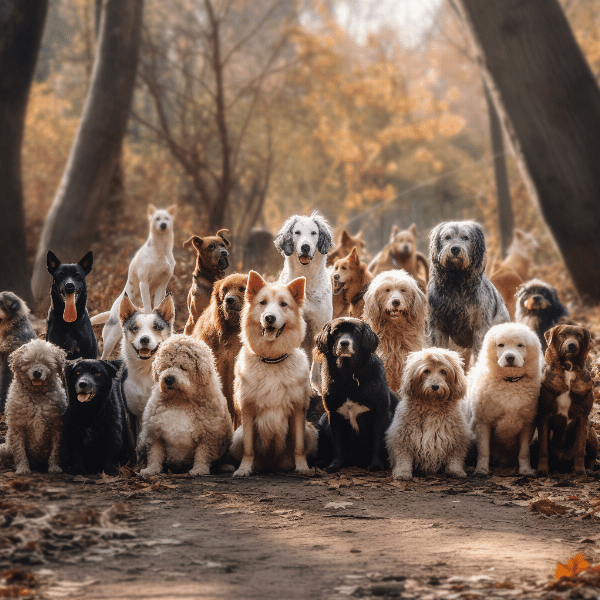
Hunting with Dogs: The History and Evolution of Canine Hunting Partners
Dogs have been used as hunting partners for thousands of years, with a rich history and evolution of their role in the sport of hunting. Here are some of the highlights of hunting with dogs:
Early Hunting Dogs
The earliest hunting dogs were likely bred for their ability to track and capture prey. These dogs would have hunted alongside their human companions, using their keen sense of smell and exceptional speed to track and catch game.
Retrievers
As hunting methods evolved, so did the role of hunting dogs. Retrievers, such as Labrador Retrievers and Golden Retrievers, were bred for their ability to retrieve game after it had been shot. These dogs were trained to retrieve birds and other small game from water or land, making them invaluable partners for hunters.
Scent Hounds
Scent hounds, such as Beagles and Bloodhounds, were bred for their exceptional sense of smell. These dogs were used to track and follow the scent of game, leading hunters to their prey.
Pointers and Setters
Pointers and setters were bred for their ability to locate and point at game, allowing hunters to easily see and target their prey. These dogs were often used in bird hunting, where they would locate and point at birds, allowing the hunter to approach and shoot them.
Modern Hunting Dogs
Today, hunting dogs continue to play a crucial role in the sport of hunting. They are bred and trained for specific tasks, such as tracking, retrieving, pointing, and flushing game. Hunting with dogs has become a highly specialized and competitive sport, with numerous organizations dedicated to the breeding, training, and showing of hunting dogs.
Conclusion
The history and evolution of hunting dogs is a fascinating story, with dogs playing a crucial role in the development and evolution of the sport of hunting. From early hunting dogs to modern, specialized breeds, dogs continue to be invaluable partners to hunters around the world. By understanding the role of hunting dogs in history and today, we can better appreciate the important bond between dogs and humans.

Legal Considerations: Laws and Regulations Regarding Dog Hunting and Rabbit Chasing
Dog hunting and rabbit chasing are subject to various laws and regulations, which vary depending on the location and jurisdiction. Understanding these laws and regulations is essential for responsible dog ownership and hunting practices.
Hunting Laws and Regulations
Hunting laws and regulations vary widely between states and countries, and may include restrictions on the types of animals that can be hunted, hunting seasons, and hunting methods. It’s important for hunters to familiarize themselves with these laws and regulations and follow them closely to avoid legal penalties.
Leash Laws
Many areas have leash laws that require dogs to be leashed or under control at all times. This is particularly important in areas where hunting or chasing behavior can pose a danger to other animals or people. Owners should be aware of leash laws in their area and ensure their dogs are under control at all times.
Animal Welfare Laws
Animal welfare laws may also apply to dog hunting and rabbit chasing. These laws may include restrictions on the treatment of animals, such as the use of inhumane traps or snares. It’s important for hunters and dog owners to follow these laws to ensure the humane treatment of animals.
Conclusion
Dog hunting and rabbit chasing are subject to various laws and regulations, which vary depending on the location and jurisdiction. It’s important for hunters and dog owners to familiarize themselves with these laws and regulations and follow them closely to avoid legal penalties. Additionally, responsible dog ownership and hunting practices should prioritize the safety and well-being of both dogs and other animals, while adhering to ethical and humane treatment standards.
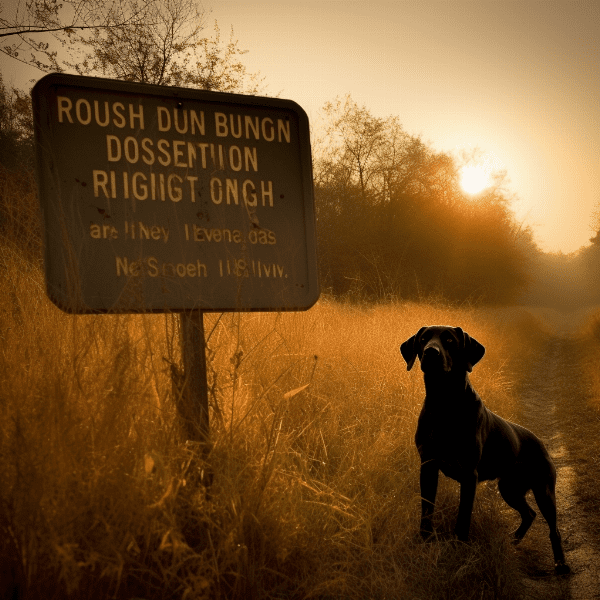
Responsible Ownership: Ensuring Your Dog’s Safety and Happiness While Respecting Wildlife.
Responsible ownership of a dog includes not only ensuring the dog’s safety and happiness, but also respecting the welfare of wildlife. Here are some tips for responsible dog ownership when it comes to chasing rabbits:
Training and Socialization
Proper training and socialization are essential for controlling chasing behavior in dogs. Owners should work with their dogs to develop obedience and recall commands, and should expose their dogs to a variety of people, animals, and environments to promote socialization.
Supervision
Supervision is also key to responsible dog ownership. Owners should supervise their dogs at all times, particularly in areas where chasing behavior can pose a risk to other animals or people. Additionally, dogs should be kept on a leash or under control in areas where leash laws apply.
Respect for Wildlife
Responsible dog ownership also involves respect for wildlife. Owners should avoid allowing their dogs to chase or harm wild animals, particularly those that are threatened or endangered. Additionally, dogs should not be allowed to disturb wildlife habitats or destroy plants or other natural resources.
Exercise and Stimulation
Providing dogs with appropriate exercise and stimulation is also important for responsible ownership. Dogs that are properly exercised and stimulated are less likely to engage in destructive or problematic behavior, including chasing rabbits. Owners should provide their dogs with regular exercise and playtime, as well as interactive toys and other forms of mental stimulation.
Conclusion
Responsible ownership of a dog involves not only ensuring the dog’s safety and happiness, but also respecting the welfare of wildlife. Proper training and socialization, supervision, respect for wildlife, and appropriate exercise and stimulation are all key components of responsible dog ownership when it comes to chasing rabbits. By prioritizing these factors, owners can promote the safety and well-being of both their dogs and the wildlife around them.
